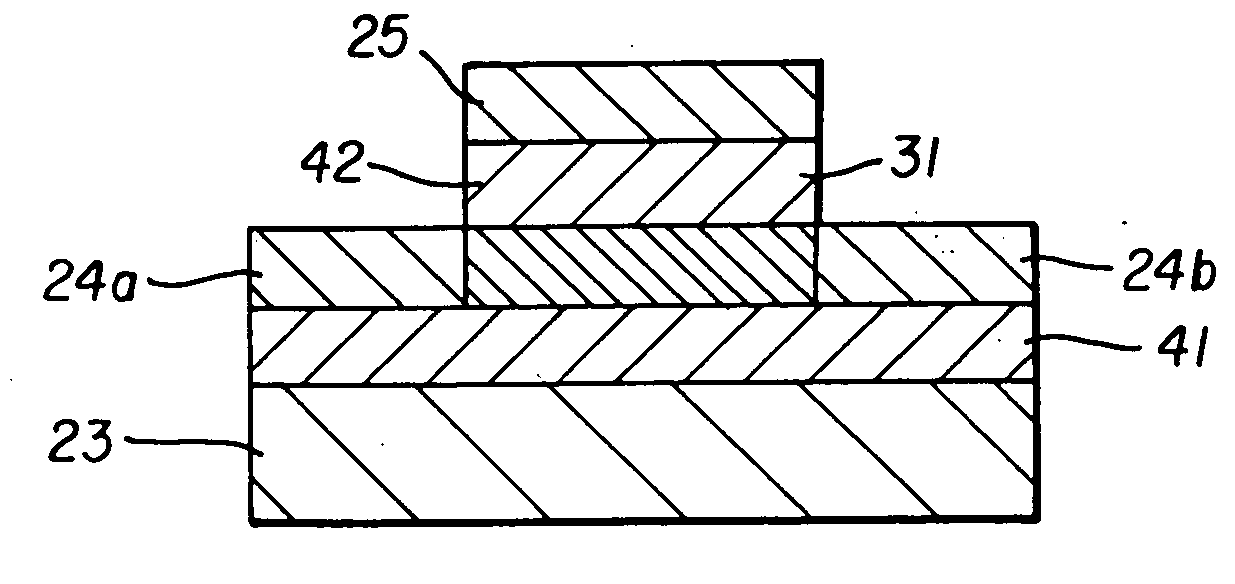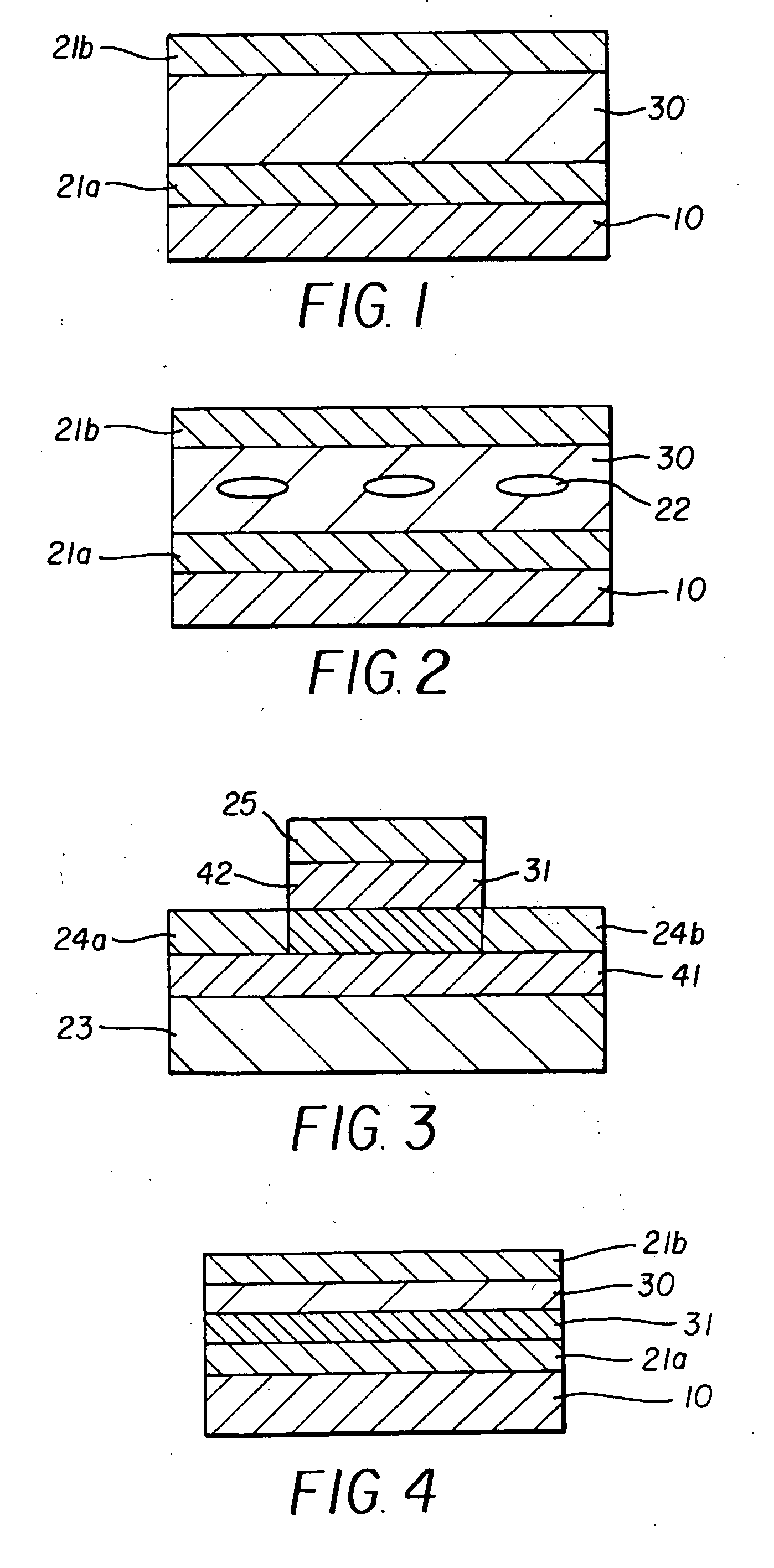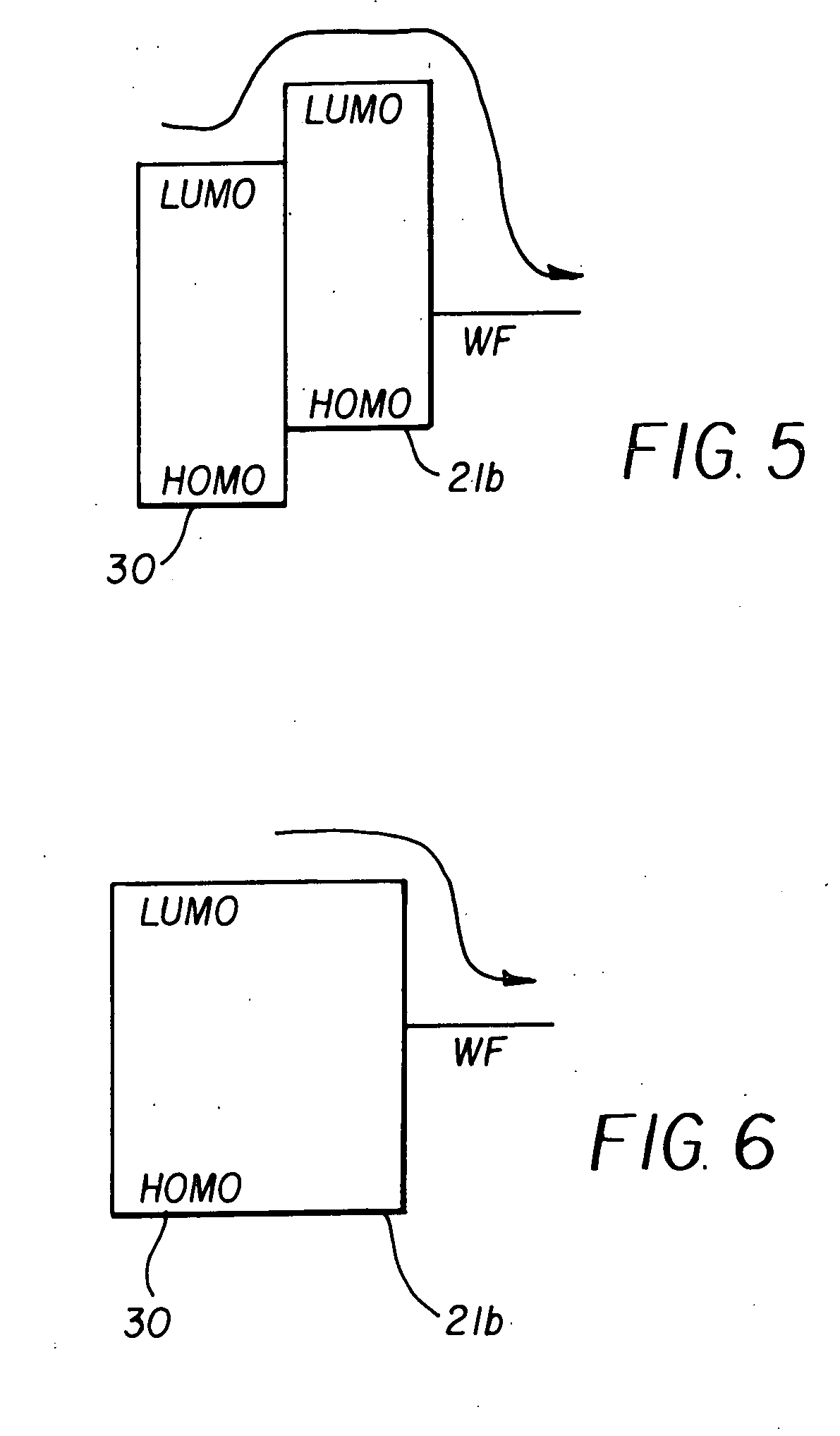Switching element
a switching element and bistable characteristic technology, applied in thermoelectric devices, instruments, organic chemistry, etc., can solve the problems of poor cyclic performance, difficult to mass-produce a switching element having a uniform bistable characteristic and product quality, and difficult to form uniform films over a large surface area, so as to reduce the resistance of the organic bistable material layer, the effect of large electric field and good cyclic performan
- Summary
- Abstract
- Description
- Claims
- Application Information
AI Technical Summary
Benefits of technology
Problems solved by technology
Method used
Image
Examples
working example 1
[0092] The switching element with a configuration shown in FIG. 1 was produced by the following procedure.
[0093] The switching element was formed by using a glass substrate as the substrate 10 and successively forming thin films by vacuum vapor depositing aluminum as the first electrode layer 21a, a quinomethane-based compound as the bistable material layer 30, and gold as the second electrode layer 21b. The compound with the below-described structural formula (I-1) was used as the quinomethane-based compound.
[0094] Further, the first electrode layer 21a, organic bistable material layer 30, and second electrode layer 21b were formed to have a thickness of 100 nm, 80 nm, and 100 nm, respectively. The vapor deposition apparatus performed diffusion pump gas discharge to a degree of vacuum of 3×10-6 Torr. Vapor deposition of aluminum and quinomethane-based compound was conducted at a substrate temperature of 20° C. and a film growth rate of 3 Å / sec and 2Å / sec, respectively. Further, ...
working example 2
[0095] A switching element was obtained by using the compound with the structural formula (I-13) presented below as the quinomethane-based compound and growing films under the same conditions as in Working Example 1 so that the first electrode layer 21a, organic bistable material layer 30, and second electrode layer 21b had a thickness of 100 nm, 80 nm, and 100 nm, respectively.
working example 3
[0096] In Working Example 3, a switching element was obtained under the same conditions as in Working Example 1, except that vapor deposition of aluminum, quinomethane-based compound and gold was conducted at a substrate temperature of 20° C.
PUM
| Property | Measurement | Unit |
|---|---|---|
| temperature | aaaaa | aaaaa |
| transition voltage th2 | aaaaa | aaaaa |
| voltage | aaaaa | aaaaa |
Abstract
Description
Claims
Application Information
 Login to View More
Login to View More - R&D
- Intellectual Property
- Life Sciences
- Materials
- Tech Scout
- Unparalleled Data Quality
- Higher Quality Content
- 60% Fewer Hallucinations
Browse by: Latest US Patents, China's latest patents, Technical Efficacy Thesaurus, Application Domain, Technology Topic, Popular Technical Reports.
© 2025 PatSnap. All rights reserved.Legal|Privacy policy|Modern Slavery Act Transparency Statement|Sitemap|About US| Contact US: help@patsnap.com



